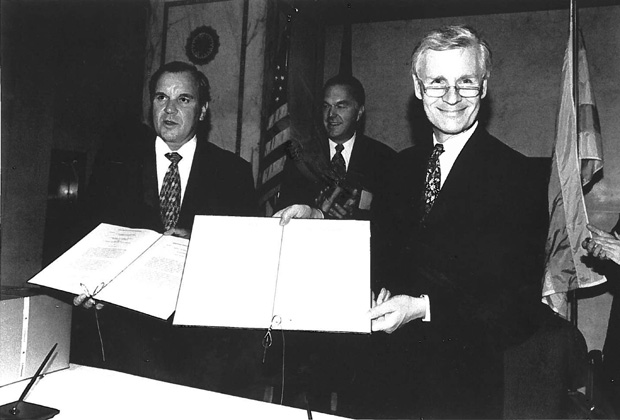The first known sister-city arrangement dates all the way back to the year 836 when Paderborn, Germany struck up a relationship with Le Mans, France. Records are scarce, but one wonders if local newspapers decried the waste of tax-payer money when the Mayor of Paderborn traveled by horse and carriage to meet his counterpart in Le Mans to sign the MoU.
All these years later, the sister city movement lives on. In fact, over the past century, it became a global phenomenon, with partnerships struck between villages, towns, cities, and regions in almost every corner of the globe. Yet, like the Paderborn-Le Mans agreement, the concept feels stuck in the past – a product of a bygone era, impervious to the business, cultural and especially technological transformations of the past decades. Its obsolescence has not gone unnoticed, with politicians, bureaucrats, and, from time to time, the media, wondering what the point is and why scarce public funds are still devoted to maintaining these relics.
“The concept feels stuck in the past – a product of a bygone era, impervious to the business, cultural and especially technological transformations of the past decades.”
But it would be a mistake to throw the baby out with the bathwater. Never before have subnational jurisdictions played a more important role in society and the economy. The increasing importance of city and region level diplomacy is a topic of discussion from Davos to Paris. New networks are born every year, including the Regions of Climate Action (R20), a climate change-focused transnational network of subnational governments. At a practical level, new technologies and the ubiquity of international travel provide a platform for connection that can drive forward a new era of sister city collaboration.
Indeed, some towns and cities have already reinvented their partnerships, rolling out creative, practical and mutually beneficial initiatives. One Australian and Chinese city pair established a bi-lingual web-based platform intended to showcase the products and services of each partner to the citizens and businesses of the other. A major American city and its European counterpart developed an industry-focused program to highlight the distinct strengths of the other, encouraging exports, joint-ventures and investment opportunities.
There are many great lessons to be learned.
“It’s time for a new approach to Sister Cities. One that recognizes the rich history and special nature of these relationships while embracing new technologies and the opportunities presented by our interconnected world.”
In a soon to be released handbook, Sister Cities for the 21st Century, we’ll detail these lessons and provide a practical roadmap for implementation that any town, city or region can use. The handbook includes case studies, planning guides, checklists, and even an example presentation and budget that intergovernmental or economic development staff can customize to present a persuasive strategy to decision-makers.
It’s time for a new approach to Sister Cities. One that recognizes the rich history and special nature of these relationships while embracing new technologies and the opportunities presented by our interconnected world. If you have read this far, I encourage you to sign up here to learn more about the Handbook and how it can help your jurisdiction.


